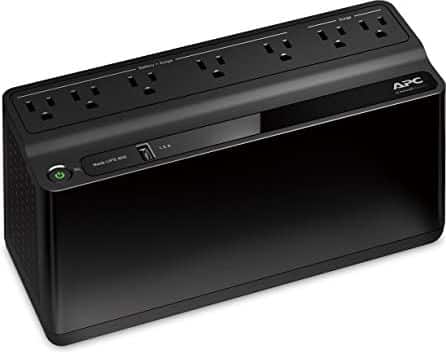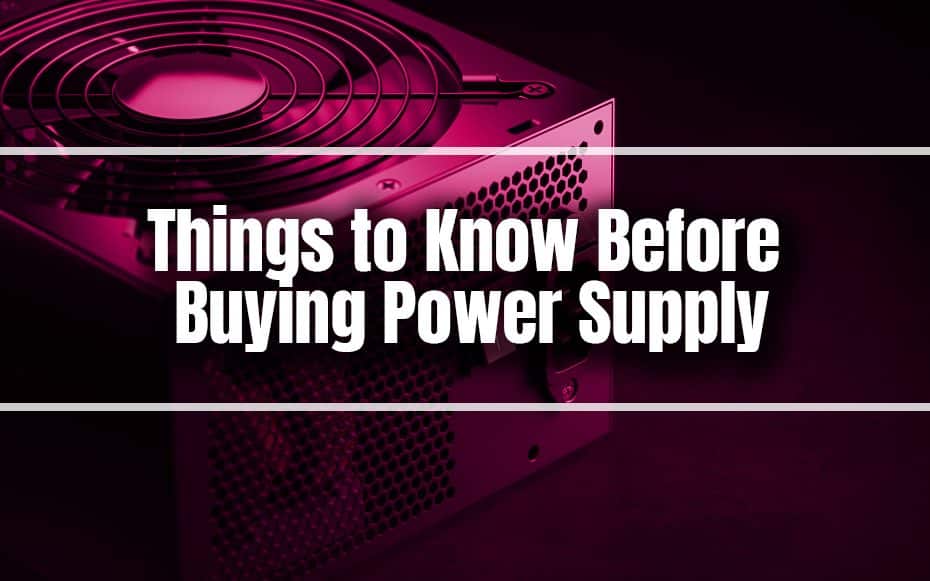An uninterruptible power supply or UPS is a straightforward solution: a battery in a box with plenty of capacity to power devices plugged into its AC outlets for minutes to hours, depending on how much power you require and the hardware mix; this may allow you to keep internet service alive during a prolonged power outage, give your desktop computer with a hard drive the five minutes it needs to conduct an automatic shutdown and avert lost work, or, in the worst-case situation, run disk repair software.
In terms of enjoyment, it may allow you sufficient time to save your game after a blackout or, more crucially, notify others in a team-based online game that you need to exit, so you won’t be penalized for quitting too soon. It also helps you continue monitoring your smart home using your desktop computer when the electricity goes out.

A UPS also serves as a surge protector, assisting your equipment and uptime by buffering transient voltage drops and other electrical power network oddities, some of which have the possibility of harming computer power supplies. A UPS can provide exceptional peace of mind, increased uptime, and less loss for roughly $80 to $200 for most systems
UPSes are not a new concept. These are decades old. But, the cost has never been lower, and the variety of possibilities has never been greater. In this introduction, we will assist you in understanding what a UPS can offer, sort out your requirements, and make preliminary buying recommendations.
UPS Types
UPSs are classified into standby, online, and line interactive. There are more than three varieties, but the others are typically a hybrid of two or more main types; therefore, we will only detail them in this article. The following is a breakdown of the various UPS kinds described above:
Standby
The Standby UPS, often known as an “Offline UPS” or a “Standby Power Supply,” is the most basic and least expensive type of UPS. This form of UPS will transfer electricity directly from the wall to the computer’s power source until a power outage occurs.
When the power goes off, the UPS will use its internal battery to power the connected item. The main disadvantage of this type is that the UPS does not switch to battery power until it detects that no power is coming from the wall.
It is conceivable that during that short period, known as the “switch time” or “transfer time,” the computer linked to it will not be able to operate without interruption; this could result in the loss of valuable, unsaved data.
Sadly, as a cost-cutting effort, some Standby UPS manufacturers may also eliminate the UPS’s capacity to filter incoming power and surge suppression in these sorts of UPSs, two of the essential UPS functions available in a UPS.
Online
Online UPSs, also known as “Real UPSs” or “Double Conversion UPSs,” are similar to standby UPSs but have certain key differences. The power in an Online UPS comes from the UPS’s battery, and the power from the wall continually recharges the battery. It’s like using a laptop when it’s plugged in. If the power goes out, it will continue to operate until the battery dies.
One of the advantages of employing an online UPS is that there is no “transfer time” if power is lost. Second, and perhaps more critically, by routing all wall power through the battery, there is an additional layer of protection against any surges or drops in voltage caused by the wall power.

Surges and voltage drops can wreak havoc on computer systems and possibly ruin them. Online UPSs are typically only available at larger capacities above 5,000 VA. They are often more expensive than standby UPSs but can result in significant energy savings and protection for big units.
Line Interactive
Line Interactive UPSs are not the same as the Standby or Online variants we previously mentioned. The electricity from the wall flows into the UPS’s Inverter/Converter in a Line Interactive UPS. The power is then divided into AC and DC currents. The DC charges the UPS battery, while the AC powers the computer’s power source. When the power to the wall goes out, the computer draws all of its power from the UPS battery.
When the power goes out, Line Interactive UPSs still have transfer time; however, it is faster than in Standby models. Furthermore, Line Interactive UPSs “filter” the alternating current (AC) coming from the wall through the inverter, smoothing out static and surges of wall power that might be passed to the computer.
UPS Features
When shopping for a UPS backup unit, you may discover some items listed as optional features. Here’s an explanation of each of these aspects.
Energy-Saving Models
UPS environmentally friendly versions cut down on energy use and associated costs.
Communication Ports
Most UPS systems include USB, serial (DB9), and contact closure communication interfaces. They provide power management, enhanced surge protection for connected peripherals, and automatic unattended shutdown; systems will shut down after a certain period of inactivity.
Multifunction LCD Control Panel
Without a computer, an LCD screen may enable access to the advanced capabilities of the UPS system. It can show useful information such as input voltage or battery capacity. A backlight is often used in LCDs. If you intend to use the UPS system in a darkened home theater, ensure the illumination can be dimmed to reduce distractions.
User-Replaceable Batteries
Most UPS versions have a detachable panel for replacing the internal battery. Tripp Lite provides a full range of interchangeable battery cartridges; this could be useful if the battery no longer maintains a charge. Instead of replacing the entire UPS, you can only replace the battery pack.

Cooling Fan
Bigger UPS systems generally include built-in cooling fans, which may affect the noise level in your area while it is operating. Generally, the more power flows through the UPS, the more heat accumulates. If the UPS becomes too hot, it will have a shorter life, will fail, and may cause damage to your systems. These fans aid in keeping the UPS cool and working efficiently.
Final Words
While we favorably recommend you get precisely the UPS unit you need with the features you want – and there’s no way to get that perfect fit without doing the math we outlined above and some careful comparison shopping – a UPS is no way cheap.
However, if you want to protect your investment in your computer system and add spice to your smart home, you will want to purchase one immediately.
